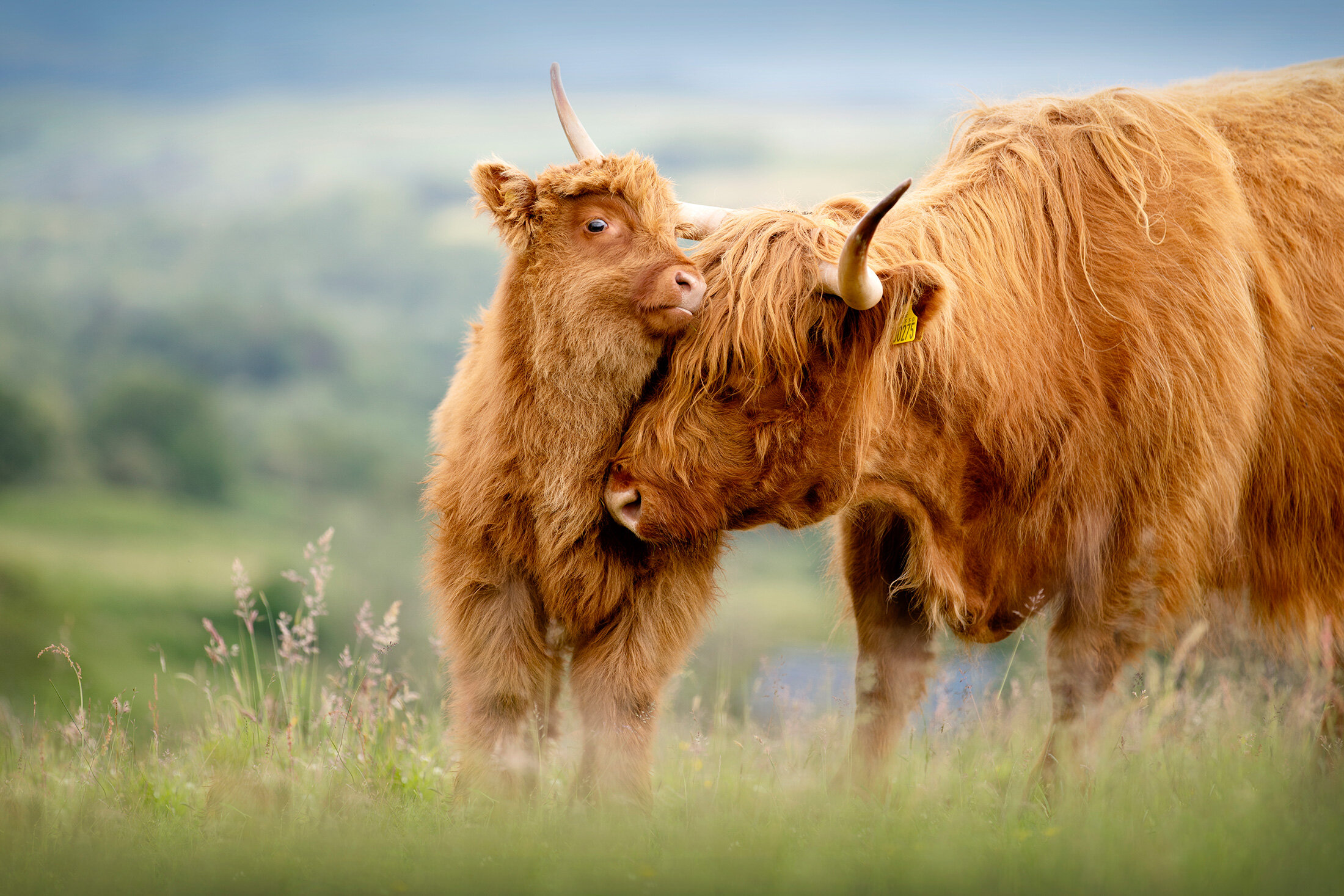
Highland breeding
Advice on calving and feeding after birth
Precalving checklist
By making sure you have everything ready to use makes life less stressful on you and your assistant. Some calves might like to come earlier than you had expected, so make sure you have the following checklist clean and ready to hand.
Clean bed area of shelter for any problems needing an overnight stay/shelter from weather. Make sure you have plenty straw to hand and feed/water. Draft free for the calf.
Think about your calving area, gates, pens, head catching equipment, halter, rope. Well lit for hours of darkness, think of your own safety and easy means of escape, even your most petted cows can have personality changes at calving time.
Make sure you have to hand a calving jack (know how to operate it), lube, spray for calf’s navel, Colostrum packs (more info in Postcalving to follow), tubing bag, feeding bottle. Calf tagger and tags (calving log book), bander and bands. Gloves.
It’s always good practice to have to hand Calcject and Mag in stock – helpful for cows coming close to calving that have clinical signs of fever, looking poorly, which will give them a boost as their energy is being depleted. Electrolyte sachets for cows/calves.
Ideally have a source of heating water/urn/kettle, if no running hot water available, and disinfectant/scrub to hand.
Have the vet’s phone number on display including any out of hours emergency number. Make sure you also have assistance on standby (even the most experienced should, for their safety alone, have an assistant with them).
Make sure you know your dates for when they are due and have them safely transported home one month prior to calving.
Have someone regularly check them if you’re away, make sure they have their precalver minal tubs in front of them and feed according to condition of the cattle and the weather.
Look out for cows isolating/change of behaviour. The last trimester is critical to calve growth, so ensuring you cattle are fed preventing them from being overweight or underweight. This will ensure the calf is getting what it needs, and the mother is more likely to have an easier/natural calving without intervention/assistance by you or the vet.
Ensuring successful calf feeding after birth
Once a cow has successfully calved, it is essential to ensure that the calf gets up and begins to suckle.
The mother’s first milk, known as colostrum, is a thick, gloopy liquid that can sometimes be mistaken for mastitis. Colostrum provides the calf with essential antibodies. Since a calf is not born with an active immune system, these antibodies help build its immunity. This transfer is most effective within the first four hours after birth. If the colostrum is not absorbed within the first 12 hours, its effectiveness is significantly reduced.
If you have a calf that is reluctant to suck, you have three options:
1. Encourage the calf to suckle from the cow
This should always be the first and preferred option for several reasons:
It stimulates the calf’s natural sucking instinct
It helps the cow expel the placenta
It reduces the risk of mastitis in the cow
If the cow is kicking the calf off, there is equipment available, such as a kick bar, that can help keep her steady.
2. Bottle-feed the calf with milked colostrum
If the calf is struggling to suckle directly, the next best option is to milk the cow and feed the calf using a bottle. Ensure it is safe to do so and that the calf receives an adequate amount of colostrum.
3. Tube-feed the calf (last resort)
If the calf is still not feeding, you may need to milk the cow and tube-feed the calf. Here’s how:
Insert the feeding tube fully into the calf
Listen at the end of the tube — you should hear stomach gurgles, indicating correct placement past the oesophagus
Fully extend the calf’s neck to mimic the natural swallowing action
Always push the tube upward towards the roof of the mouth - the calf should start to swallow
Only once you are certain the tube is correctly placed, release the milk into the calf’s stomach
This should always be a last resort, as the calf is not using its natural sucking reflex. Frequent tubing can cause mouth soreness, making the calf less likely to suck in the future. Safety is paramount.
Calf feeding patterns and mastitis risk
A newborn calf will typically favor one teat initially and may take a week to ten days to start using all four. In warmer weather, this could increase the risk of mastitis in the cow. Symptoms include red, inflamed teats, and in severe cases, mastitis can affect the cow’s mobility.
Ensuring a calf gets adequate colostrum early on is crucial for its health and the cow’s well-being. By following these steps, you can improve the chances of a strong, healthy start for both the calf and the mother.



